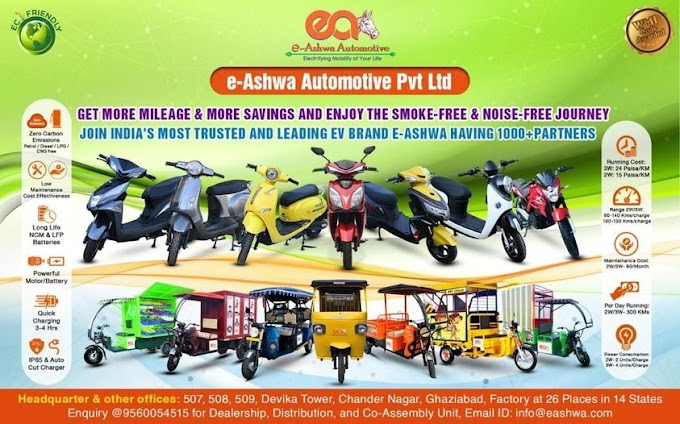In the post-COVID scenario, the forecasted demand for three-wheelers may grow, and commuters may transition away from app-based taxis. Electric auto rickshaw vehicle manufacturing company can play a critical role as top contenders in promoting electric transportation in India.
Informal means of transportation, such as auto-rickshaws, e-rickshaws, and cycle rickshaws, are included in Intermediate Public Transport (IPT). These modes provide for first- and last-mile connectivity with public transportation systems such as buses, trains, metros, ferries, and others, as well as satisfying the demands of everyday commuters for short and medium-distance segments in a city. These means of transportation are an important aspect of India's urban transportation system because of their flexibility, ease, and low costs.
Many poor and lower-middle-class communities depend on the auto-rickshaw industry for their livelihood. Because of the tremendous demand for their services and the government's limited ability to oversee their spread, incidences of overcharging and unwillingness to transport customers are not frequent. Despite increased demand in our cities, the IPT sector continues to be generally ignored by politicians for not being fuel-efficient, generating additional air pollution and congestion, even though the National Urban Transport Policy (NUTP) of 2006 recognized the significance of IPTs in the overall transport system.
Electric auto manufacturer in India can play a critical role as front runners in promoting electric Rishwa transportation in India. The incentives are provided by the federal and state governments in the form of one-time subsidies, tax breaks, and other concessions, among other things. This would aid in the creation of demand for electric cars by lowering the cost of procurement. Battery pricing, demand incentives, supply push, and charging infrastructure are the four main drivers of electric mobility growth. In addition, many experts predict that lower lithium-ion battery costs would be a major driver of EV adoption in India.
The expense of operating an electric auto-rickshaw
The preference for electric auto-rickshaws over traditional ones can be attributed to a number of factors, including the auto-reduced rickshaw's operating costs. This amounts to significant cost reductions for the operators over time. The advantage of practically zero emissions is a huge gain for a city. India is the world's largest auto-rickshaw market (ICRA, 2016), which might lead to a surge in demand for electric auto-rickshaws and e-rickshaws that are zero-emission. According to the Society of Manufacturers of Electric Units, sales of electric three-wheelers increased by 21% in 2018-19, with 6.3 lakh vehicles sold. With the spread of charging infrastructure across the country's main cities, owners and operators of electric cars may become more interested in their operations. The battery swapping technique, which replaces depleted batteries with newly charged ones, cuts down on the time it takes to charge an electric vehicle's batteries. This will work well in a close circuit with cars that are of the same sort and use the same technology.
Though electric auto-rickshaws are now more expensive than their ICE counterparts, a considerable reduction in running costs has been noted in Bangalore, from INR 2.2 per kilometer to INR 0.4/km. The e-rickshaw manufacturers & supplier at best price in India. It is envisaged that government incentives, along with lower operating costs, would eventually drive the deployment of electric auto-rickshaws in cities. According to a report undertaken by leading industry leaders Das electronics solutions, Kinetic Green Energy and Power Solutions, and Hero Electric Vehicles Limited, the electric three-wheeler market is expected to develop at a 45.2 percent compound annual growth rate (CAGR) between 2018 and 24.



0 Comments